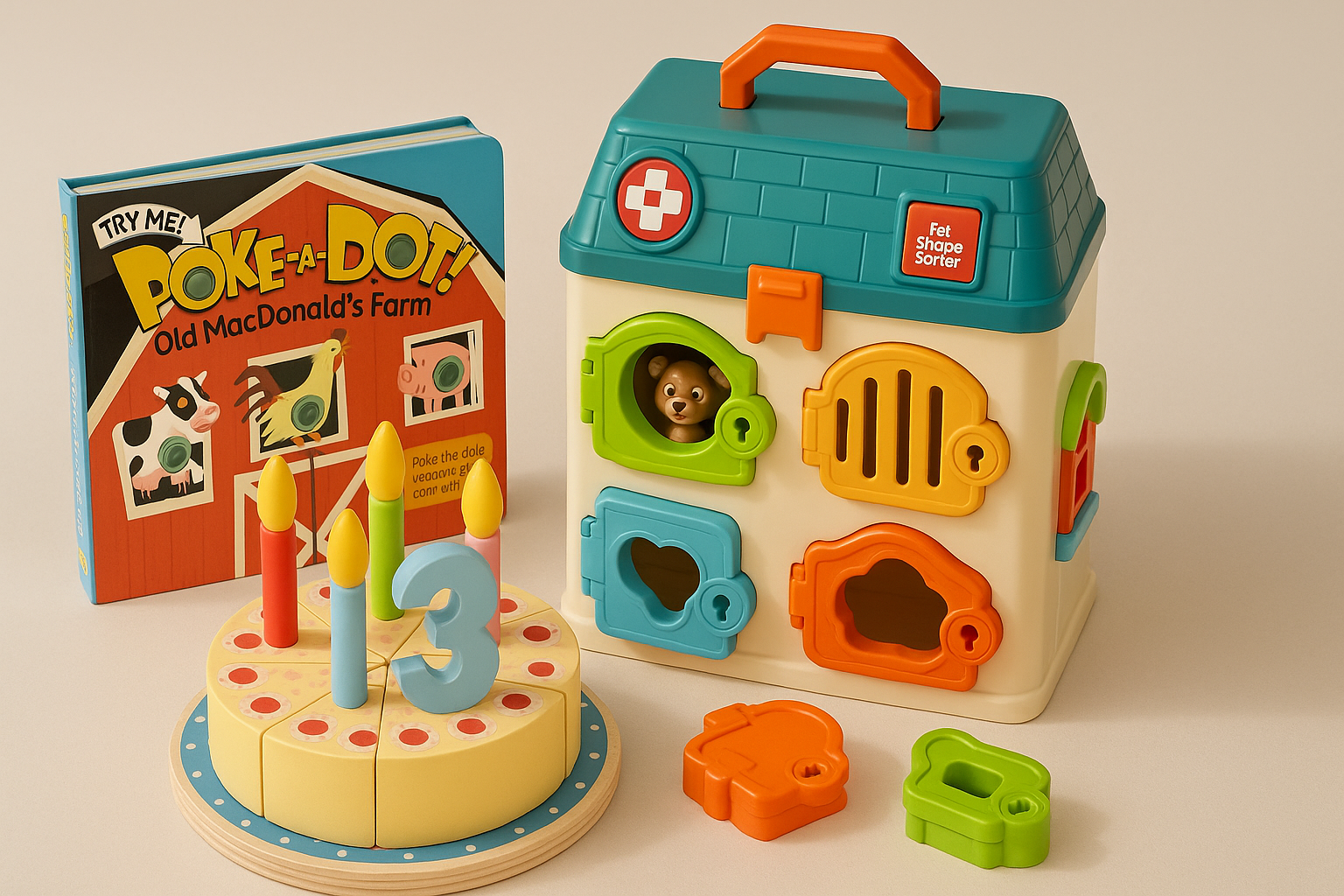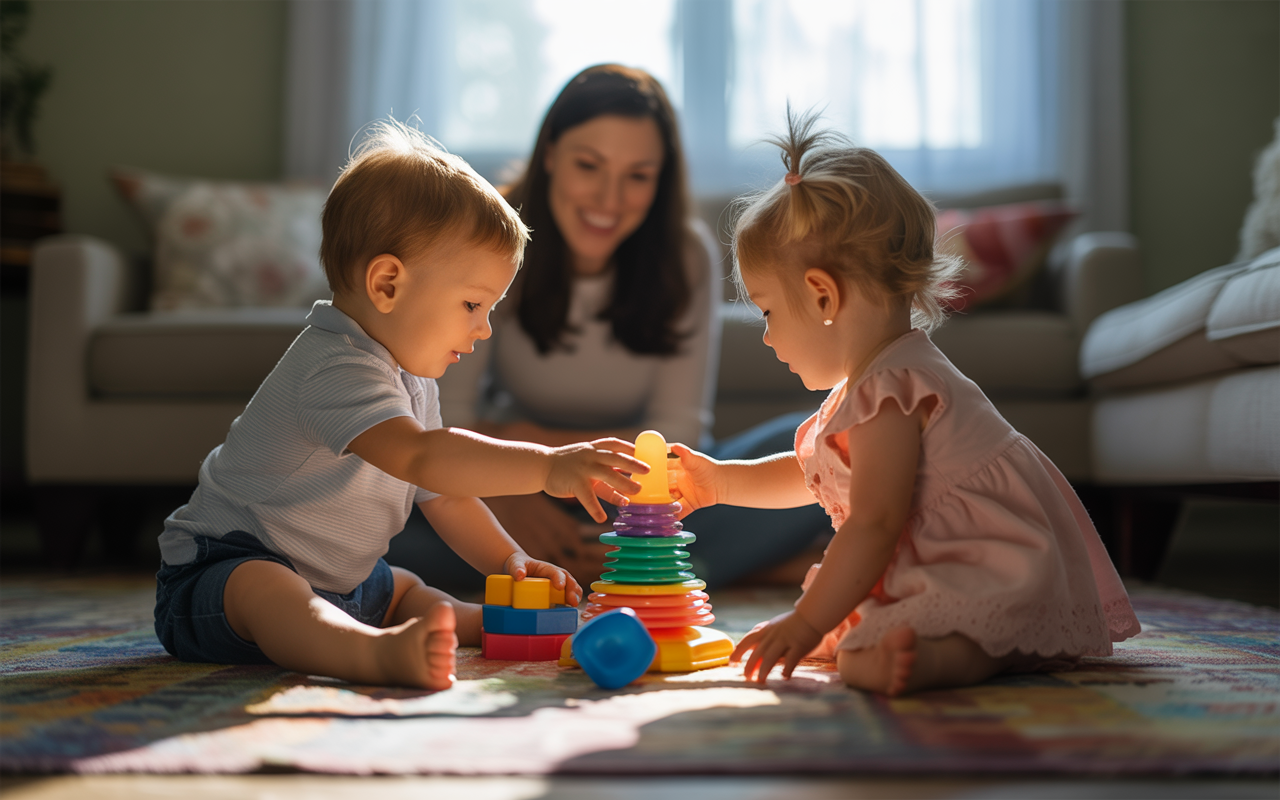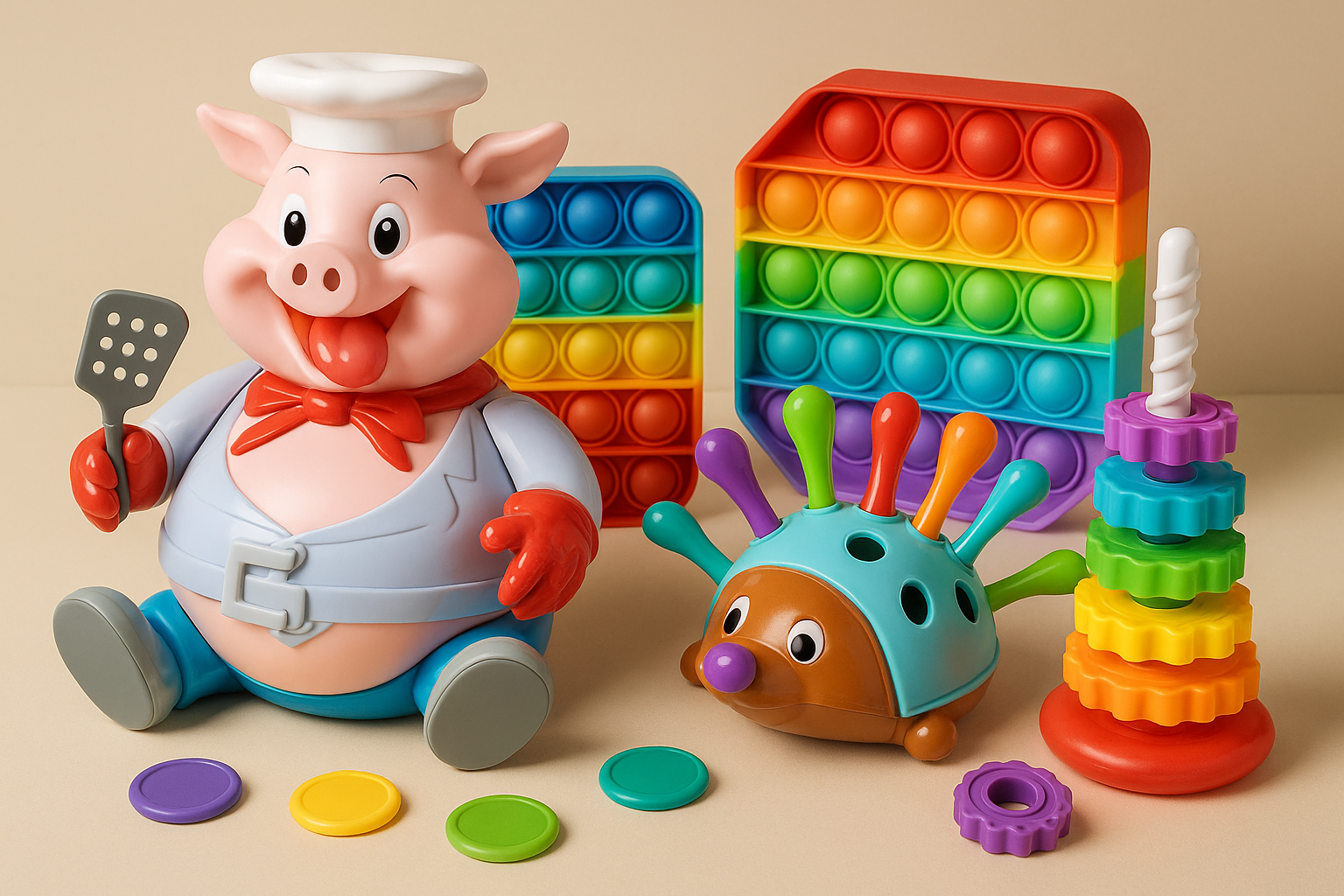Last Updated on December 2, 2025 by Lisa Whaley
Finding the right toys for a child on the autism spectrum can feel like guesswork. You want something fun, something that captures attention, and most of all, something that helps your child connect and communicate. But toy aisles aren’t exactly designed with that in mind. Many parents describe feeling lost because they are surrounded by bright boxes but unsure which ones will actually support their child’s needs.
That’s exactly why we created our Top 17 AAC-Friendly Toys guide at AAC Plus. These toys aren’t just fun. They’re communication tools. Essentially they are ways to spark shared attention, build turn-taking, and encourage words (or gestures, or symbols). They’re for play that talks back.
What Makes a Toy ‘Autism-Friendly’?

An autism-friendly toy often has:
-
Predictable feedback. The toy reacts the same way every time, creating comfort through consistency.
-
Engaging textures and sounds. Different materials can calm or stimulate depending on what your child enjoys.
-
Opportunities for control. Buttons, switches, or cause-and-effect play let your child do something and see a result.
-
Space for imagination. Open-ended play materials let your child explore at their own pace without feeling pressured.
These toys aren’t “therapy tools”. They’re simply designed to meet children where they are, with a gentle awareness of sensory and communication differences.
AAC-Friendly Toys: Play That Speaks Volumes
If you’re new to AAC, it stands for Augmentative and Alternative Communication. That includes anything that helps someone express themselves from speech-generating devices and picture cards to gestures and signs.
AAC-friendly toys are special because they invite communication. They encourage choices, reactions, and interaction. For example, a toy that lights up when pressed can become a simple communication moment: “More?” “Again?” “My turn!” Even without words, you’re creating shared meaning.
The goal isn’t to push speech. It’s to build the foundation of communication itself , that beautiful back-and-forth exchange between two people. When your child learns that their action can make something happen, or that you respond to their signals, that’s communication growth in motion.
Related Articles: Creative Ways to Teach Writing to Kids Using AAC
Highlights from the “Top 17 AAC-Friendly Toys” List
Without giving away the full list (that’s in our free download), here’s a glimpse of how some toys encourage language, attention, and social interaction.
1. Cause-and-Effect Toys
Think of toys that react when your child presses, pops, or feeds them something. A favorite example is Pop the Pig, where you feed colorful burgers and watch the pig’s belly grow. It’s silly, visual, and perfect for practicing words like feed, more, big, and stop. This type of toy encourages repetition and anticipation, two essential ingredients for communication learning.
2. Pretend Play Sets
Pretend play can be challenging for some children on the spectrum, but with the right materials, it becomes an exciting way to explore language. Toys like the Wooden Cutting Cake Play Set or the Lehoo Castle Veterinarian Playset create natural openings for labeling, turn-taking, and storytelling. You can model simple phrases like “cut cake,” “give medicine,” or “your turn.” These short, functional phrases fit beautifully into AAC devices or visual boards.
3. Sensory Toys
Fidget tools, pop tubes, and sensory bins aren’t just calming, they help build attention and regulation. When your child feels comfortable in their body, they’re more ready to connect. During sensory play, you can model words like soft, squeeze, or listen, and pair them with visual icons or gestures.
4. Building and Sorting Toys
Stacking blocks, magnetic tiles, or shape sorters help with joint attention, the shared focus between you and your child. That skill is at the heart of language learning. Each time your child hands you a piece or looks at your reaction, you’re strengthening the social bridge that communication rests on.
Every toy on our full list supports multiple areas of growth, communication, fine motor, attention, and regulation, all wrapped in play that feels joyful instead of clinical.
How to Choose the Right Toy for Your Child
The best toy isn’t the flashiest or most expensive. It’s the one your child comes back to again and again. Here are a few tips we share with families and therapists:
-
Follow your child’s lead. Watch what they’re already drawn to such as spinning things, textures, pretend play, or sensory exploration. Start there.
-
Match sensory preferences. If your child avoids loud sounds, skip noisy toys. If they seek movement, look for toys with parts that roll or bounce.
-
Think about communication opportunities. Choose toys that naturally encourage requesting, labeling, or commenting.
-
Play alongside AAC tools. Use the same words on your child’s device or board while you play. If you’re stacking blocks, model more, help, all done.
-
Don’t rush. Communication through play isn’t about quantity. It’s about shared moments. Pause and wait for your child to respond, even if it’s a glance or a giggle.
At AAC Plus, we believe the best toys are the ones that invite connection first and skills second. That’s the difference between a toy that teaches and a toy that transforms playtime into a moment of joy.
Related Articles: Core Words vs. Fringe Words: What Matters Most for Beginners
The Bigger Picture: Play as Connection, Not Therapy
Sometimes, play for children on the spectrum gets turned into a checklist such as “Did they imitate?” “Did they label?” “Did they use their device?” It’s understandable. Progress matters. But what we often see is that the real breakthroughs happen when play stops feeling like a task.
When your child laughs because the toy made a silly noise, or looks at you to see your reaction and that’s communication. It’s not measured in words per minute, but in connection per minute. That’s what truly builds communication growth over time.
For parents, giving yourself permission to just play can be freeing. Sit on the floor. Follow your child’s curiosity. You don’t have to direct every moment. You’re not the therapist here, you’re the partner in fun.
And if you’re a speech-language pathologist, you know the beauty of those unscripted moments. The spontaneous “uh-oh!” or the shared giggle over a pretend mishap often tells you more about a child’s communication potential than a formal test ever could.
Explore the Full List of AAC-Friendly Toys
If this conversation has you thinking, “I’d love some concrete ideas,” we’ve got you covered. We put together the Top 17 AAC-Friendly Toys checklist to make your next toy search easier and more intentional.
Each toy in the guide includes notes on what skills it supports, communication, sensory regulation, or pretend play, and how you can use it with AAC strategies at home or in therapy sessions.
➡️ Download the guide here: Top 17 AAC-Friendly Toys
It’s a free resource from AAC Plus to help you make playtime meaningful and language-rich, without the stress of trial and error.
Closing Thoughts
Every child communicates, sometimes with words, sometimes with gestures, sometimes with joy in their eyes. Play is one of the most natural, powerful ways to bring that communication forward.
The right toy can help your child express want, need, surprise, or delight. But the real magic is in what happens between you and your child. That back-and-forth. That shared moment.
So next time you sit down to play, remember: it’s not about performing or practicing. It’s about connecting. You’re helping your child discover that their voice, however it shows up, matters.
If you’d like more guidance and specific examples, we invite you to download our free Top 17 AAC-Friendly Toys guide on AAC Plus. You’ll find thoughtful recommendations that turn playtime into communication time.
Because when play speaks, connection grows.






















